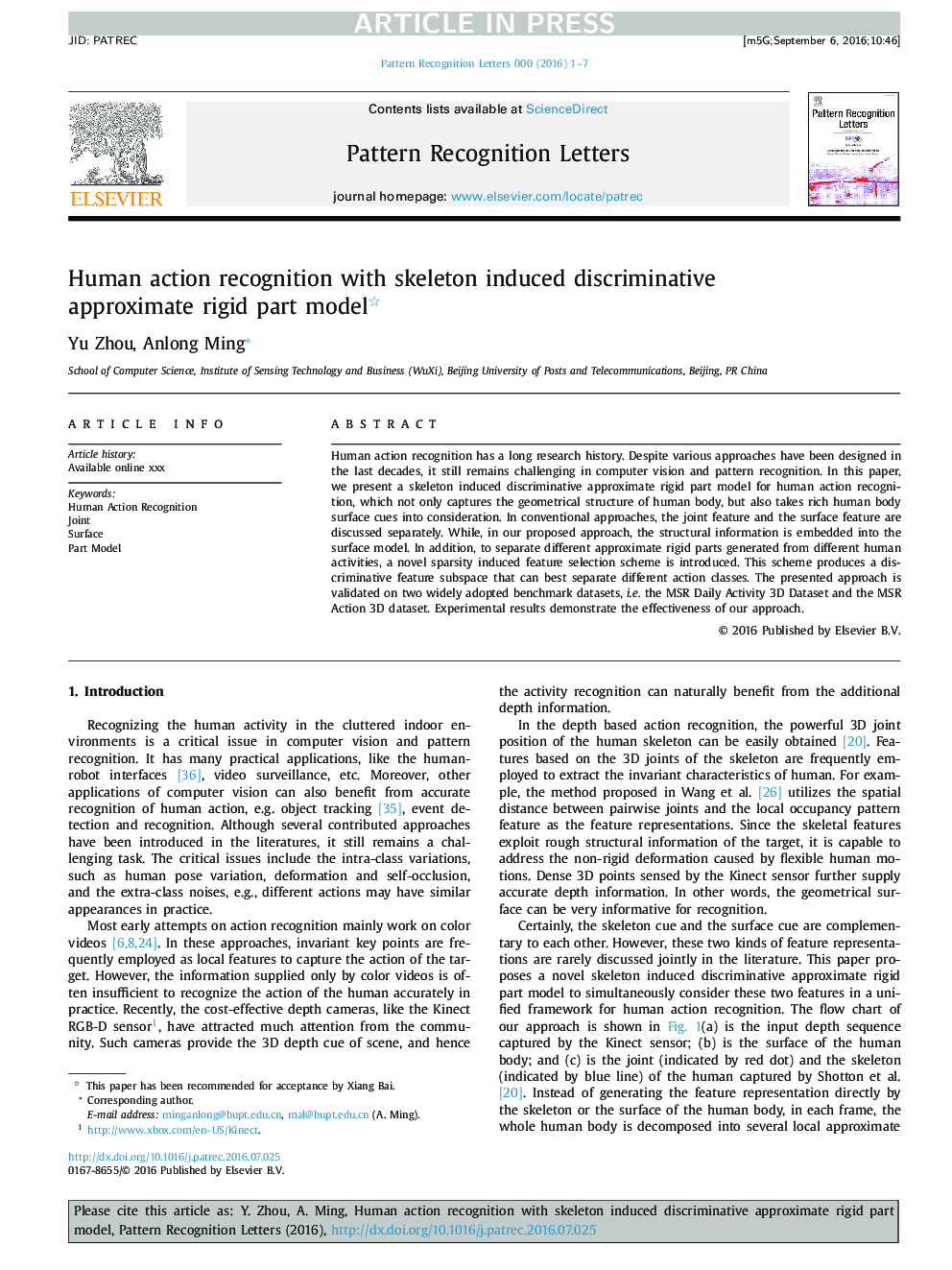| Article ID | Journal | Published Year | Pages | File Type |
|---|---|---|---|---|
| 4970206 | Pattern Recognition Letters | 2016 | 7 Pages |
Abstract
Human action recognition has a long research history. Despite various approaches have been designed in the last decades, it still remains challenging in computer vision and pattern recognition. In this paper, we present a skeleton induced discriminative approximate rigid part model for human action recognition, which not only captures the geometrical structure of human body, but also takes rich human body surface cues into consideration. In conventional approaches, the joint feature and the surface feature are discussed separately. While, in our proposed approach, the structural information is embedded into the surface model. In addition, to separate different approximate rigid parts generated from different human activities, a novel sparsity induced feature selection scheme is introduced. This scheme produces a discriminative feature subspace that can best separate different action classes. The presented approach is validated on two widely adopted benchmark datasets, i.e. the MSR Daily Activity 3D Dataset and the MSR Action 3D dataset. Experimental results demonstrate the effectiveness of our approach.
Keywords
Related Topics
Physical Sciences and Engineering
Computer Science
Computer Vision and Pattern Recognition
Authors
Yu Zhou, Anlong Ming,
